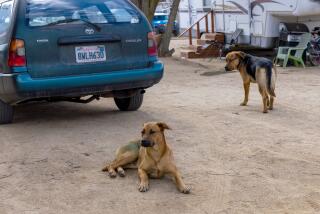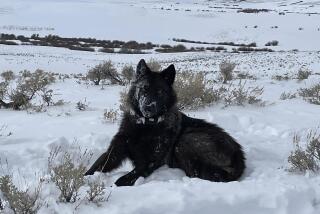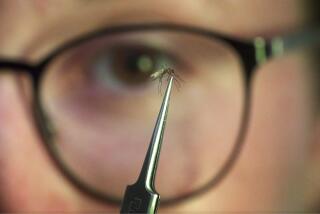After ruling, Utah removing hundreds of prairie dogs
CEDAR CITY, Utah — Most mornings, wildlife biologist Jessica Van Woeart and her team go to work armed with peanut butter.
In upscale subdivisions and across rural pastures in southern Utah, they use it to help trap prairie dogs and move them away from residents who have been under siege from the small burrowing rodents for years.
Van Woeart’s team is doing something that was relatively rare and complicated until last year, when a federal court judge removed endangered species protections for the Utah prairie dog.
Activists say the ruling could also weaken protections for similar animals all over the country, and on Monday it will come before a federal appeals court in Denver.
The Utah prairie dog is the smallest of five species and lives in underground colonies in the southern part of the state. Considered key to the ecosystem, their numbers dropped precipitously as land was cleared to make way for farming, ranching and housing and they were listed as endangered in 1973.
With federal protection, the population rebounded to about 28,000 as of this spring, according to state tallies, and they were upgraded to threatened.
But the animals felt anything but rare to locals who chafed under federal rules that kept any moving or trapping of prairie dogs to a minimum.
“They’re really cute little things, but they really cause so much damage,” said Sharon Peterson, a Cedar City resident whose backyard used to look like a sea of the little squirrel-like creatures.
In 2013, a group of residents sued in federal court. After U.S. District Judge Dee Benson’s ruling, the ranks of prairie dogs near Peterson’s house receded under the state’s new trapping program.
Heading it up is Van Woeart, a petite New Jersey native with boundless energy and sign on her office wall that reads “Keep Calm and Love Prairie Dogs.”
Most mornings, her technicians dressed in matching brown T-shirts bait wire rectangular traps with peanut butter in and around the rapidly growing city about 250 miles south of Salt Lake City.
They check them every hour or so, and they’re usually not disappointed. Some days, they catch more than 100. After they’re caught, the creatures are weighed, tagged and then loaded into the back of a pickup truck for an hour-long drive over hills covered with sage and yellow grasses.
Their new homes are prepared ahead of time: A system of artificial burrows made from irrigation piping and plastic boxes and buried underground. The workers hold the traps over the new burrows, open the door and let the dogs scurry inside.
On a recent day, the brown-eyed animals nibble on bits of zucchini or sound their distinctive, clicking bark to their new neighbors on public land about 25 miles outside of Cedar City. It’s different than the suburban burrows they’ve left behind, higher and drier, with different food and predators.
They’ve caught about 2,500 animals so far this summer, turning them loose in a series of similar sites.
The workers leave food and water and try to keep the highly social animals together to ease the transition, but many of them won’t survive in the new environment. After a year, just 10 to 15 percent of the creatures typically remain at the relocation sites, said Keith Day, a state wildlife biologist who oversees the prairie dog program. Though some leave, many die.
“When you pick an animal up out of its natural setting and you move it to a new location ... you can expect a fairly high mortality rate,” Day said. Still, he said that trapping an animal and moving it is better than the lethal methods that fed-up locals used to employ off-the-books while federal rules held sway.
“People have been taking care of their own problems,” Day said. “If we can put a prairie dog out on federal land and get a colony out of it, that’s better than letting somebody shoot it.”
Copyright 2015 The Associated Press. All rights reserved. This material may not be published, broadcast, rewritten or redistributed.
More to Read
Sign up for Essential California
The most important California stories and recommendations in your inbox every morning.
You may occasionally receive promotional content from the Los Angeles Times.










